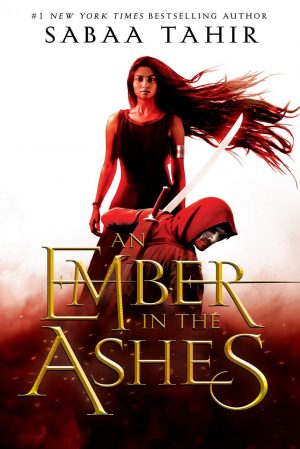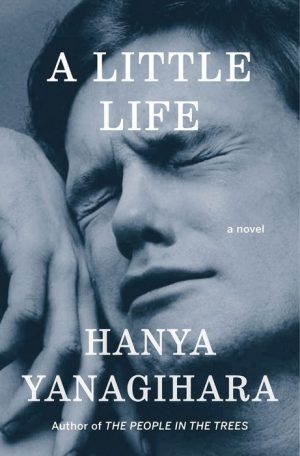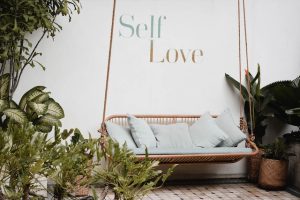Ampersand Interview Hali
July 17, 2019
Jacob: Can you think about who or what inspires you when you paint?
Hali: That’s a good question. I have a lot of contemporary artists that I’m inspired by. And I like to look back at their work. That really gets me very inspired. I have a lot of close friends that I will bounce ideas off of, and so that gets me super inspired. And definitely having deadlines and stuff like that. I have one professor that I’ve had since my sophomore year, she taught me Painting 1. She really inspires me, I love her artwork, and she definitely helps me stay in line and she’s very supportive at the same time.
J: Any specific names you can think of for artistic inspirations?
H: My favorite is Jen Mann, she’s a contemporary painter. She does some film, a lot of similar work to me in regard to the imagery, and I guess the content as well. I have a favorite photographer as well who inspires my work. Her name is Sally Mann. She’s pretty famous I think. She’s an older woman from Virginia, and she does the really old school- where you have to put a sheet over the camera-
J: Large format?
H: Yeah. And I just love her work, there’s a lot of emotion and depth in it, so I think that really inspires my imagery as well.
J: You’ve got a very distinctive style, I would say. You work in a lot of words- can you talk about how you developed that?
H: I’ve always been interested in the detail aspects of people and objects, I’ve always admired those all my life, and as well as capturing those details I like to use projections and project words and phrases onto my subjects as a way to control the overall composition and the feeling that it’s going towards. I tend to have this very romantic but dark feel at the same time which is inspired by my other major, which is communication. I like to explore our relationships with people.
J: You were recently added to the permanent collection at the Hand Art Center. Can you talk a little bit about how you went from just getting started to getting added to the Hand Art Center’s permanent collection?
H: I’m presenting my show currently in the Hand Art Center right now with the other senior art majors for our exhibition, and I had one piece added to the permanent collection already. I have had one other piece which was added last semester, it was quite a smaller piece. It was an amazing feeling because I started painting my sophomore year, so two years ago in the spring, and I really didn’t think of this as being as important and I didn’t see myself doing this whatsoever. I think a big thing for me was making art that I personally loved that I wanted to see, and it evolved into something really great- avoiding those outside biases and outside influence that would prevent me from doing something that I didn’t want to do.
J: So you started painting only two years ago?
H: Yes- I dabbled every now and then but it wasn’t a big part of my life at all. My brother was always the more artistic one, and it just wasn’t considered as an option for me. I decided to pick up the art major randomly, which was really weird, because I had never really painted in oil before. I took Painting 1 in the spring of 2017.
J: Can you talk about any sort of challenges that you’ve faced?
H: Yes. It was definitely really challenging to create this body of work, because I had to think of a visually cohesive and conceptually cohesive body of work last semester, right when I started. That was really challenging for me because all of my work tends to be very different but has a very similar concept in mind, and it was really hard for me to know exactly what I wanted to do right then and there. So I really went into it blind, and did each piece individually and hoped that it all related together.
J: What do you do when you lose inspiration?
H: When I lose inspiration it’s really hard because it definitely affects my emotions. It’s a really really bad feeling when you don’t have any inspiration or any idea of what you want to paint. So I think a big thing for me is writing, journaling, writing down my ideas just to get things going, even if it doesn’t make sense. I’m not even big on sketching, even though I’m an artist. Writing definitely helps me a lot, and it pulls out the dramatic side of things which really gets me flowing into creating more artwork.
J: So you think of yourself as a multi-genre artist in many ways?
H: I think so, I think writing has always been a huge part of my life and my career here at Stetson, and so that’s always- I used to want to be a journalist, I used to want to write, but then it developed more into the visual side of things. I think art too also has a lot of different aspects about it. If I’m a painter I’m not just a painter, I’m also all of the other things because they all contribute together.
J: So along those lines, if you had to work in a different medium from painting, do you know what that would be?
H: I think I would love to do sculpture installation pieces because that’s such a big movement in contemporary art right now. If you go to Art Basel or something you see installation pieces. There’s so much freedom and expression in them, but my style of painting is a little more naturalistic and realistic and so I don’t even know if it would be possible for me to release that kind of abstraction. I’ll probably give it a try.
J: Are there any themes or motifs that you find yourself returning to a lot?
H: Yeah, I tend to stray towards human expression and human emotion, so my body of work is essentially about relationships and those complexities, and the darker side of relationships and romance. I tend to want to display these in ways such that there’s a lot of contradicting aspects. I’ve made some pieces in the past when I was just beginning, and I originally wanted to display- I like the idea of “you see something, but when you really look at it you’re getting a completely different feeling.” So for example, I had a portrait of a girl who was licking a lollipop and it was super playful and fun, but there were also sexual qualities and more mature qualities. I like contradicting myself in my work as a way to get a range of responses from the viewer.
J: Which of your pieces do you think best describes you and your work?
H: I feel like it’s always changing. Now I would definitely say it’s the very last piece I did. Probably because it’s the last piece I feel I resonate more with it, but it captured all of the qualities and elements I learned as I was going through this process of creating this body of work. It was bigger and more detailed and it really captured the essence of what I was going for.
J: Can you think back to a pivotal moment in your artistic career?
H: I feel like I’m in that pivotal moment right now. Since a lot of the people that I go to school with that are also art majors have been making art seriously for so many years before they came to Stetson, and for me it was a last-minute decision and I’m still learning a lot. I think being in three shows already and getting two purchase awards- this is a pivotal moment for me. And I’m now realizing that this is something I really want to do and this is something that I’m good at.
J: Do you have any advice to somebody else who’s just getting started?
H: Yes. I think art is a lot about taking from other people and doing a lot of research on other artists and realizing how much is possible, and trying out different things and trying to pursue the imagery that you truly want. Don’t look at other artists and say “I have to do the same thing,” just pull inspiration from them and do what you want to do ultimately. Just like any other field, doing what you want will lead ultimately to the best outcome.
J: If you had to describe yourself and your work in one sentence, what would that look like?
H: I think my work is very traditional and naturalistic in the visual aspect but explores a lot of more contemporary concepts about us as humans and how we interact with the world around us or how we view ourselves and our identities or our personas.








